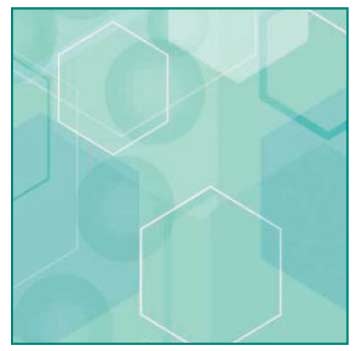 J Clin Aesthet Dermatol. 2023;16(6):50–51.
J Clin Aesthet Dermatol. 2023;16(6):50–51.
by Alejandra Méndez, MPH; Megana Rao, BS; Sahand Rahnama-Moghadam, MS, MD; Basma Gomaa, PhD; Eric R. Walsh-Buhi, MPH, PhD
Ms. Méndez and Rao are with the Indiana University School of Medicine, Indianapolis, Indiana. Dr. Rahnama-Moghadam is with the Department of Dermatology at the Indiana University School of Medicine in Indianapolis, Indiana. Drs. Gomaa and Walsh-Buhi are with the Department of Applied Health Science at the Indiana University School of Public Health in Bloomington, Indiana.
FUNDING: No funding was provided for this article
DISCLOSURES: The authors report no conflicts of interest relevant to the content of this article.
Hidradenitis suppurativa (HS) is a chronic debilitating inflammatory skin disease that is poorly understood and underdiagnosed. Social media provides a cost-effective and efficient way to communicate about health online and, particularly, HS.1 While Facebook is the most-used social media platform worldwide, it has come under scrutiny for its misinformation propagation. The purpose of this study was to identify the prevalence, sources, and user engagement metrics regarding HS-related misinformation on Facebook.
Using CrowdTangle, 845 posts were retrieved from public accounts and pages on Facebook, from April 2021 to April 2022, using the search terms “Hidradenitis Suppurativa” and “# Hidradenitis Suppurativa”. A total of 600 posts met inclusion criteria, with the primary outcome of HS-related content written in English. To optimize interrater reliability,2 independent reviewers (A.M. and M.R.) completed two pilot runs before independent coding. Disagreements were arbitrated by a third reviewer (B.G.) to refine variables and develop a codebook. Substantial interrater agreement was achieved (Cohen’s kappa > 0.6). This methodology has been applied to investigate other topics, supporting the validity of our approach.2,3
Of the 600 posts including HS-related content, 598 posts were analyzed due to two missing data points (Table 1). In our content analysis, 65 of 598 posts (10.9%) were classified as misleading; most of these posts were created by patient advocates (n=21/65, 32%) and patients (n=19/65, 29%). Businesses were defined as organizations that sell products and services, comprising the third largest source of misleading posts (n=8/65, 12%), including sales promotions of anecdotal and unscientific information on the efficacy of natural products (Table 2). Health professionals accounted for the fewest misleading posts (n=5/65, 7%), most of which included functional medicine practitioners promoting homeopathic remedies. In terms of user engagement, misleading posts garnered 690 interactions through comments, shares, and emoticons. Misleading videos were noted in few posts (n=5/65, 7%), resulting in 1,620 views.


To the best of our knowledge, this is the first study to examine the prevalence and main sources of misinformation associated with HS on Facebook. We expanded our analysis to specifically identify misinformation that captured the attention of Facebook users. The prevalence of misinformation is relatively low compared to studies of other chronic skin diseases.4,5 CrowdTangle collects data from public accounts with specific features such as verified accounts and those with a high number of followers. We understand that this may have impacted the collection of data, possibly ignoring accounts with fewer followers that may potentially spread misinformation and, thus, our study may be conservative in estimating the amount of misinformation. Additionally, among the misinformation content, only a minority of the content were videos, which tend to gain more popularity.
The large presence of patient advocates on Facebook may be explained by the movement to increase awareness about HS or fear of stigmatization commonly experienced by patients. Based on our findings, social media users must use vigilance when reading content published by businesses and functional medicine practitioners, who praise miracle cures of natural products for HS without evidence-based support. Collaborations between professional dermatology associations and patient advocacy groups may serve as novel and effective intervention partnerships to deliver medically accurate information pertaining to treatments and general information, which is key to maximizing patient adherence and treatment success.
We believe that this study serves as a first step to highlight the dissemination of HS-related misinformation on social media. Understanding the prevalence, sources, and user interaction of misinformation will help dermatologists elucidate disparities in HS. Understanding these complexities requires innovative strategies to contextualize the impact of social media interactions on health outcomes for HS, and ultimately, combat this public health concern.
References
- Falzone AE, Brindis CD, Chren M-M, et al. Teens, tweets, and tanning beds: rethinking the use of social media for skin cancer prevention. Am J Prev Med. 2017;53(3):S86–S94.
- Gomaa B, Houghton RF, Crocker N, et al. Skin Cancer Narratives on Instagram: Content Analysis. JMIR Infodemiology. 2022;2(1):e34940.
- Walsh-Buhi E, Houghton RF, Lange C, Hockensmith R, et al. Pre-exposure prophylaxis (PrEP) information on Instagram: content analysis. JMIR Public Health and Surveill. 2021;7(7):e23876.
- Mueller SM, Jungo P, Cajacob L, et al. The absence of evidence is evidence of non-sense: cross-sectional study on the quality of psoriasis-related videos on YouTube and their reception by health seekers. J Med Internet Res. 2019;21(1):e11935.
- Qi J, Trang T, Doong J, et al. Misinformation is prevalent in psoriasis-related YouTube videos. Dermatol Online J. 2016;22(11).

